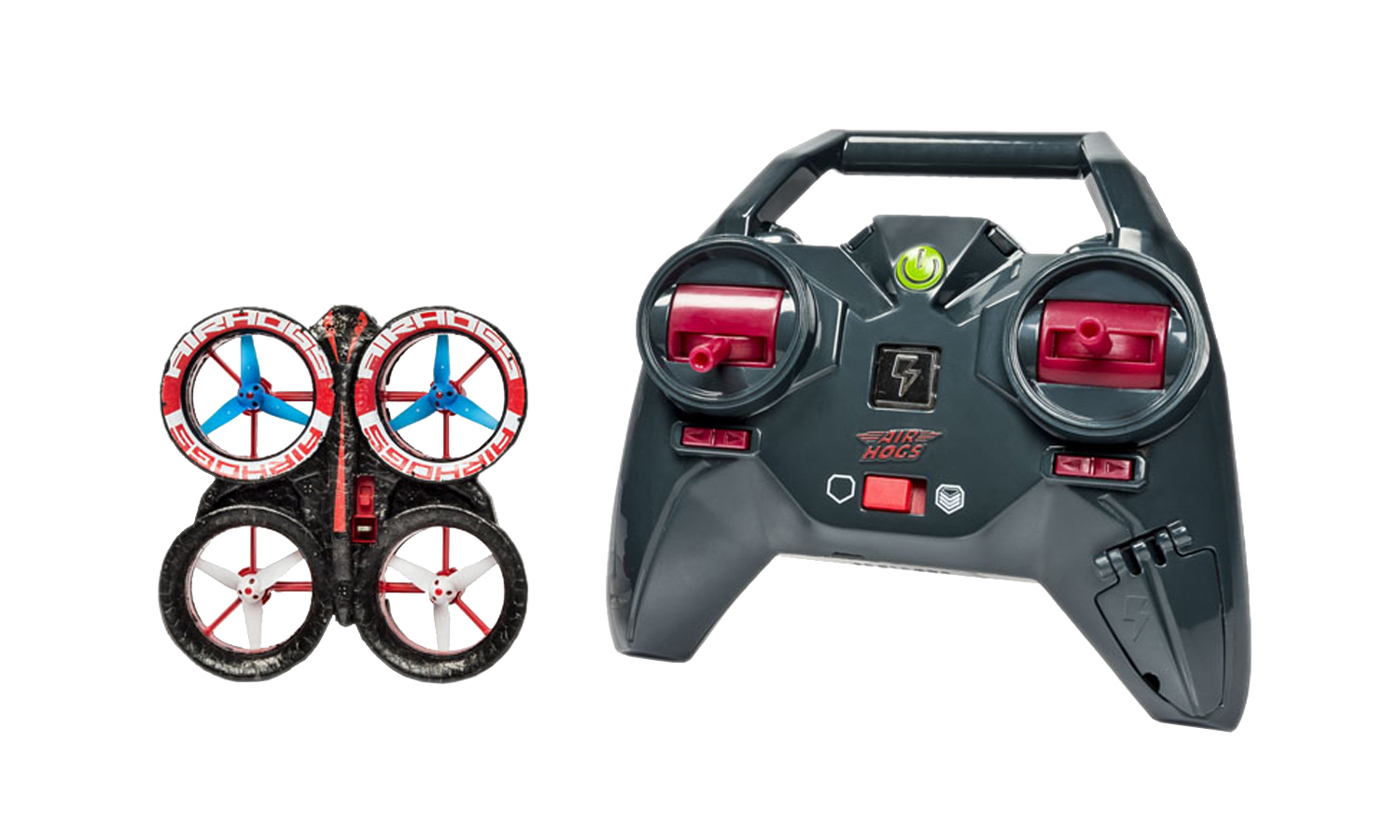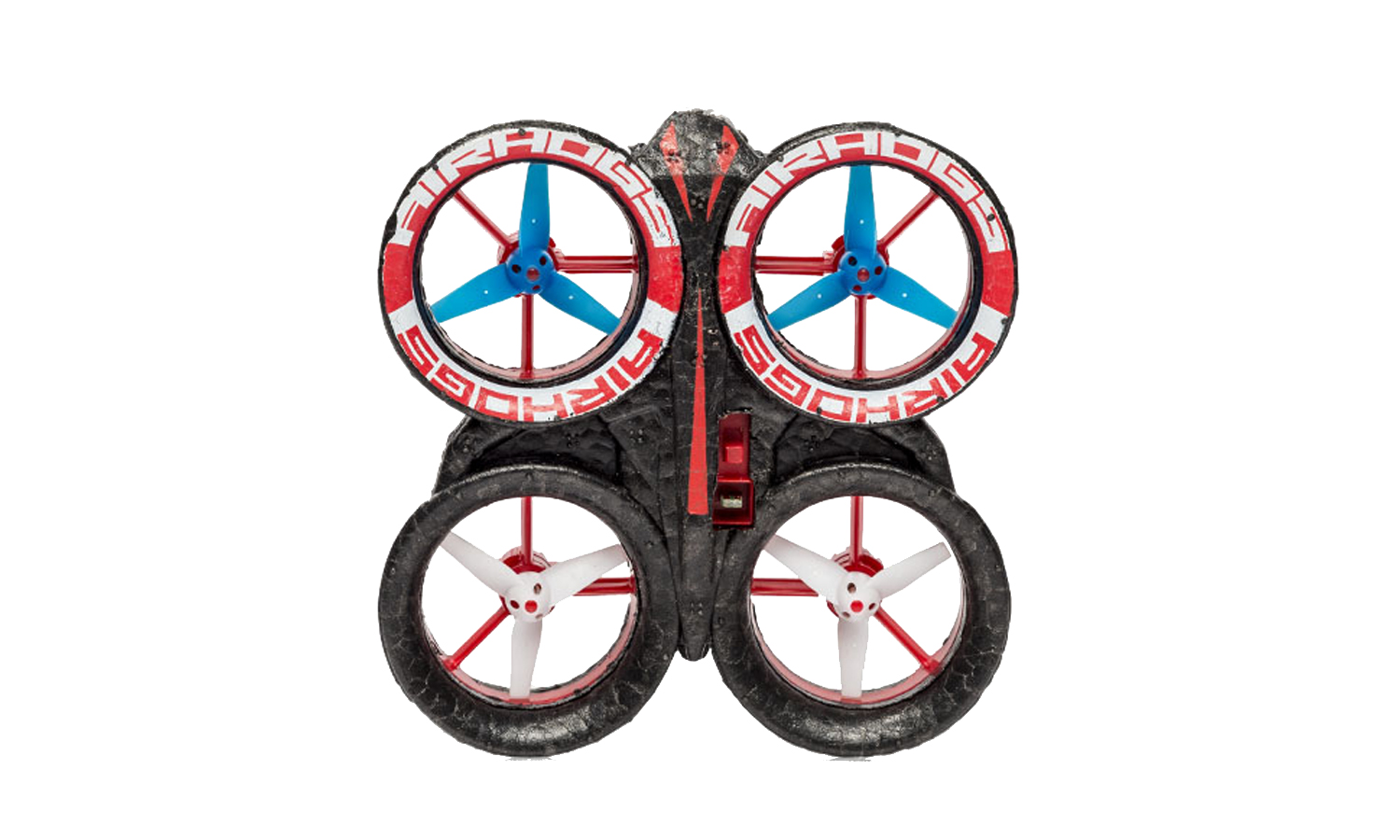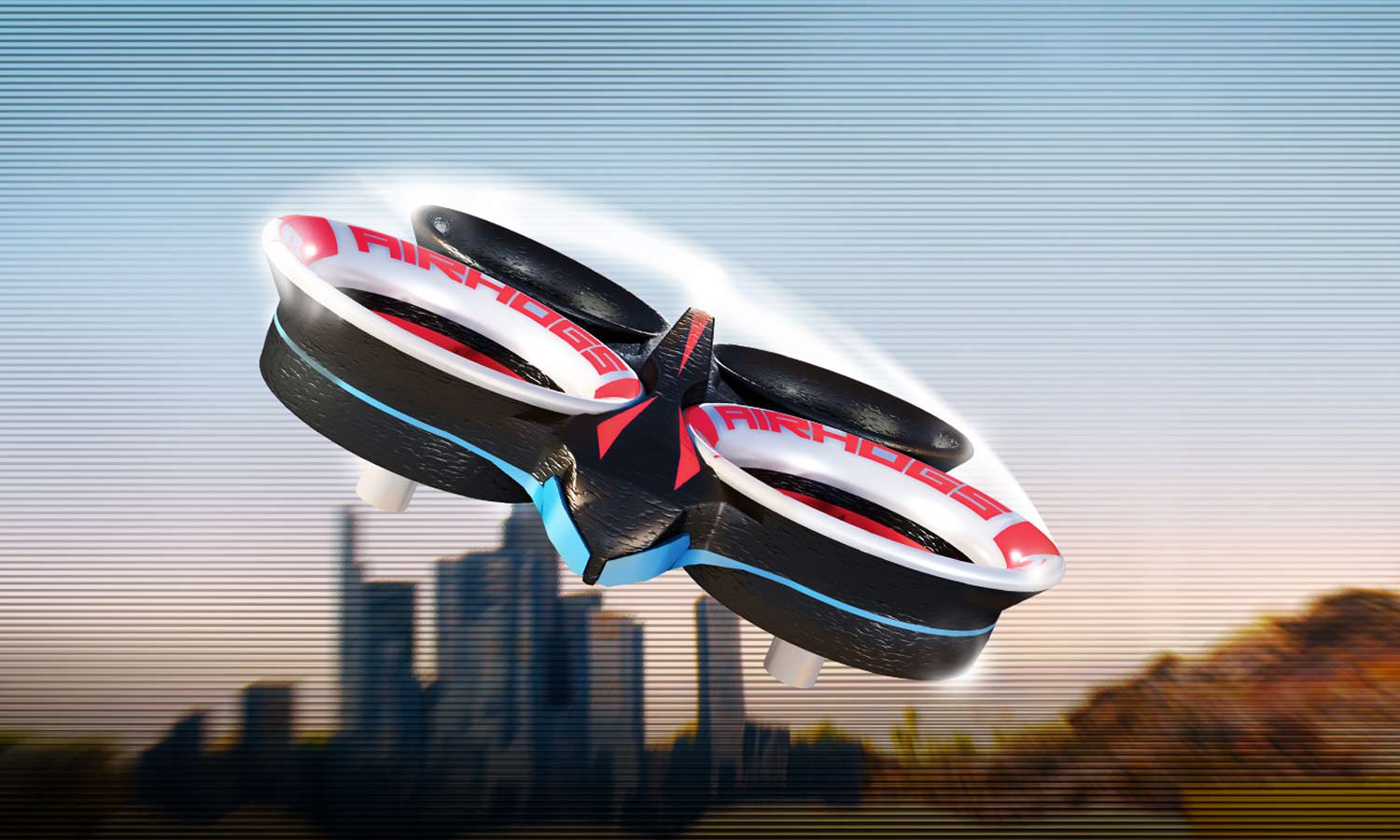Tom's Guide Verdict
A rugged and easy-to-fly quadcopter, but it needs a good amount of room to maneuver.
Pros
- +
Tough, light construction
- +
Simple flight controls
Cons
- -
Short battery life
- -
Long recharge time
- -
Very prone to drafts
- -
No user-replaceable parts or battery
Why you can trust Tom's Guide
The Air Hogs Helix Ion is a small, extremely tough drone that can take a lot of punishment and keep flying. This $49.99 quadcopter is light and pretty easy to fly, although it does need a lot of room to fly well. It would be an ideal first drone for younger pilots or those who can only fly indoors. The ducted rotors and foam frame mean it shouldn't break anything (or anyone).
Design: Simple, Lightweight Construction
The Helix Ion tries to look intimidating, with two LED eyes on the front that glower at you. It doesn't really work, though: it ends up looking cute rather than tough, and the slightly rough construction of the foam frame makes it look more like a dog toy than an alien intruder.
The first thing you notice about it when you pick it up is the weight. Although it is just more than 3.25-inches wide, it weighs in at an impressively light 0.8 ounces. That's because the frame is constructed of lightweight polystyrene foam, which makes this drone both light and tough.

The squishy foam frame (Air Hogs calls it the ExoFrame) surrounds the body and the rotors, forming ducts that surround the blades. This means that if you bump into something, both the rotors and the thing you hit are protected — the drone simply bounces off. This frame won't stand up to someone stepping on it, but it did protect against all of the crashes and hard landings we doled out during our testing.
Two, small eye-shaped LEDs on the front of the frame show the status, blinking to indicate an error (or low battery) or changing color from red to green to indicate the status (red for novice mode, green for advanced). These also help to indicate the front of the drone, along with the two blue-colored rotor blades.
SPECS
Rotors: 4 ducted nonreplaceable, 1.2 inch diameter
Battery Size: 140 mAh Li-ion (quadcopter), 4 AA (remote)
Battery Life: 6 minutes (tested)
Size: 3.5 x 3.5 x 1.2 inches
Weight: 0.77 ounces
Controller: X-Box Style
The remote control of the Helix Ion is shaped like a classic PlayStation game controller, although it is larger and heavier (at just under 8 ounces) than its gaming equivalent. The similarity continues with the presence of a trigger on the top that activates the tricks the quadcopter can do: hold this down and flick the right controller stick, and the quadcopter does a flip.
Get instant access to breaking news, the hottest reviews, great deals and helpful tips.

It is powered by four AA batteries (not included) that fit under a screwed-down panel on the back. In the right handle of the remote is a space for the quadcopter charger cable, and there is a micro USB port on the base. Two control sticks are on the top, along with a power button, charging indicator light and the mode switch. The remote fits well in the hand, with the control sticks falling under the thumbs and the stunt button falling under the index finger of the right hand.
MORE: Best Drones - Top Rated Quadcopters on the Market
The controller and quadcopter talk to each other over a 2.4GHz Wi-Fi connection, which we found worked out to a range of about 25 feet. That's not far, but you aren't going to fly a small quadcopter like this at longer distances, as you would easily lose it. In fact, at 10 feet it can be hard to see, because of its size.
Flying: Simple, Easy to Control
There are two flight modes for the Helix Ion: novice and advanced. Controlled by the mode switch on the front of the remote, the novice mode limits the speed at which the quadcopter can turn or accelerate. Switching into advanced mode removes these limitations, and makes it a significantly faster and more maneuverable flying machine.
Not that it's a slouch in either mode. The Helix Ion flies well, with responsive controls and a lot of speed available in both modes if you push it. It is a little easier to control than the Aerius, as the larger rotor blade size means it can stop and turn quicker. Paradoxically, I found the advanced mode a little easier to fly with, because the increased turning speed makes it easier to reverse the direction, if the quadcopter slips out of control.

The stunt trigger puts the quad into stunt mode. Hold the trigger down and push the right stick in any direction, and the quadcopter will somersault over and right itself. It's an impressive trick, but it does need a lot of room. Try doing the trick when the quadcopter is less than 7- or 8-feet high, and the Ion will hit the ground before the somersault completes, as it involves the quadcopter being upside-down for a while.
Most people won't have room indoors for the tricks, so it is best done outside or in a large room with a high ceiling. I also found that the light weight of this quadcopter makes it very prone to breezes: fly too close to a fan (or outside in even a gentle breeze) and it will go careening off course.
Repairability: None
The Helix ion isn't really built to be repaired: None of the parts can be easily swapped out and replaced. To be fair, the rotor blades (the most commonly broken part of a quadcopter) are hidden in ducts, so they won't break as often as they will on others. The battery is also sealed in place, inside the foam frame, so it can't be swapped or replaced. For something with limited battery life, this isn't a particularly helpful design.
Battery Life: Short
The Helix Ion gets its va-va-va-voom from a very small 3.7-volt, 140 mAh Lithium Polymer battery, located in the middle of the quadcopter. Air Hogs doesn't make any specific claims for battery life, but in our tests we got about 6 to 7 minutes of flight, which is fairly standard for a miniature drone like this. The somewhat smaller Axis Aerius lasted just 5 minutes.

When the battery runs low, the lights on the front of the quadcopter flash, and the motors cut out a few seconds later. You don't get a lot of warning here; once the lights start blinking, you have about 15 seconds of flight left. Once the battery dies, the lightweight quadcopter floats to the ground.
Unusually, the quadcopter battery can be recharged two ways: from a USB connection or from the remote-control batteries. A cable is stored in the right-hand side of the remote, which plugs into the top of the quadcopter, right next to the power switch. This carries juice from either the remote- control batteries or a USB cable (not included) that plugs into a micro USB port on the base of the remote. Charging from a USB, we found that the quadcopter battery took about 20 minutes to refill, and charging from the remote-control batteries took about 30 minutes. The Axis Aerius took about 22 minutes to recharge.
MORE: Lily Drone Is a Flying Action Camera That Follows You
It is unfortunate that the charging from the remote control batteries is so slow, because it is a neat trick for getting longer flight times away from home. However, this did charge easily from a car lighter to USB power adapter, so you do get some portability.
Bottom Line: A Smart Flier
The Helix Ion is a smart, cheap quadcopter that will appeal to novice or first-time fliers, and at $50, it won't break the bank if they don't stick with it. It will also appeal to the parents of these novice fliers, because the foam coating means that it won't damage anything (or anyone) that it hits. It flies well, and is easy to control, but it needs a good amount of room to fly in, especially if you want to perform stunts.
Richard Baguley has been working as a technology writer and journalist since 1993. As well as contributing to Tom's Guide, he writes for Cnet, T3, Wired and many other publications.

